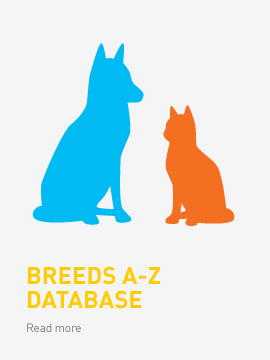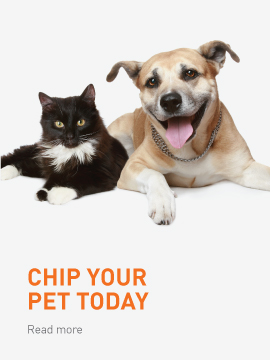Air and Train Travel
Your method of travel on a train or airplane will vary depending on how large or small your pet is. Medium and large breeds usually must travel in the cargo hold of the airplane in a crate. Most airlines have specific requirements for the size and type of crate your dog will travel in – contact them for more details. Specific breeds may be banned from travel, such as fighting breeds (Pit Bulls, Staffordshire Bull Terriers, etc.) or must travel in a specifically designed metal crate.
When in airports or train stations, be aware that the noise and sheer number of people may frighten your dog. Dogs may try to run or become hyper-excited in this situation. Keep your dog on a short leash affixed to a secure collar or harness. Some dogs may bite out of fear or anxiety, even if they are normally very well mannered. Children may run up to your dog and your dog may nip out of surprise.
Be aware that in some countries, such as Poland, require dogs to be muzzled while in public. A cage muzzle fits over the dog’s mouth and head and still allows them to breathe normally and drink water through it. Muzzling dogs in public is very common in Central or Eastern Europe – having a cage muzzle with you is a good idea just in case such laws are in place.
Travel Tip: Anxiety
- Some dogs may be anxious during travel. Many people must take a car with their dog and crate to the airport or train station. If your dog is over-excited in the car or in public, it is a good idea to take short trips to get him or her used to it before the big day.
- Simply feeding your dog while sitting in the car every day for a couple of weeks before the trip can help reduce anxiety levels. The dog will learn to associate the car with good things (food!).
- If your dog has severe anxiety during travel, talk to your veterinarian about appropriate sedatives. If your pet is flying, some sedatives are not allowed by airlines due to safety concerns.
Travel Tip: Collar or harness
- Your dog’s collar or harness should be securely fastened for optimum control. Loose-fitting collars can slip off if your pet begins to pull or jump around, allowing opportunity for escape and possibly injury.
- Consider using a harness during travel even if your dog doesn’t normally wear one. These fit around the dog’s neck, shoulders and chest and provide greater control and security.
Car and Ferry Travel
Many dogs enjoy car travel, especially if they get to do it often. It is a good idea to get your dog used to the car long before you decide to take a long journey. If anxiety or motion sickness is a problem, you can try some of our Travel Tips before you set off.
Keep your dog’s collar or harness on while in the car. Always be 100% sure that the leash is affixed to the collar before opening the doors or windows. If your car has air conditioning, use it instead of opening the windows – as your dog may try to fly away if this opportunity is presented! If you must open the windows, open them just a small bit! Travel inside a crate is safest while in a car but is not always possible. Use a special “doggie seatbelt” to secure your dog to the car seat belt. In the event of an accident or if you brake too hard – your dog will stay secure and is less likely to be injured or thrown from the vehicle.
Regular toilet breaks are necessary for everyone – take your pup for a quick jog after he uses the toilet and offer water or a small meal. Water should be offered frequently while en route – this will help prevent dehydration.
Many people choose to take their car to the Continent or across the Baltic Sea by ferry. Never leave your dog in the car unattended. Some ferry operators require pets to remain below decks in a special holding area away from the cars. If you take an overnight ferry, your dog may be allowed in the sleeping cabin with you. Your dog will welcome this opportunity to “stretch legs” walking around the ferry and often there are dog toilet areas on the outside decks.
Travel Tip: Motion Sickness
- Feed your pet an hour or more before travel.
- Talk to your veterinarian about a medication called Cerenia. In some countries, these tablets are labelled for use in dogs for prevention of motion sickness.
- Secure your pet facing forward in the car
- Secure your pet using a crate or restraint device. Dogs that are allowed “free reign” in the car are more likely to get motion sick as they bounce around with the movement of the car.
- Use of a crate can help prevent motion sickness. If your dog is ‘crate trained’ at home, he or she may feel more secure being in a familiar environment as well.






